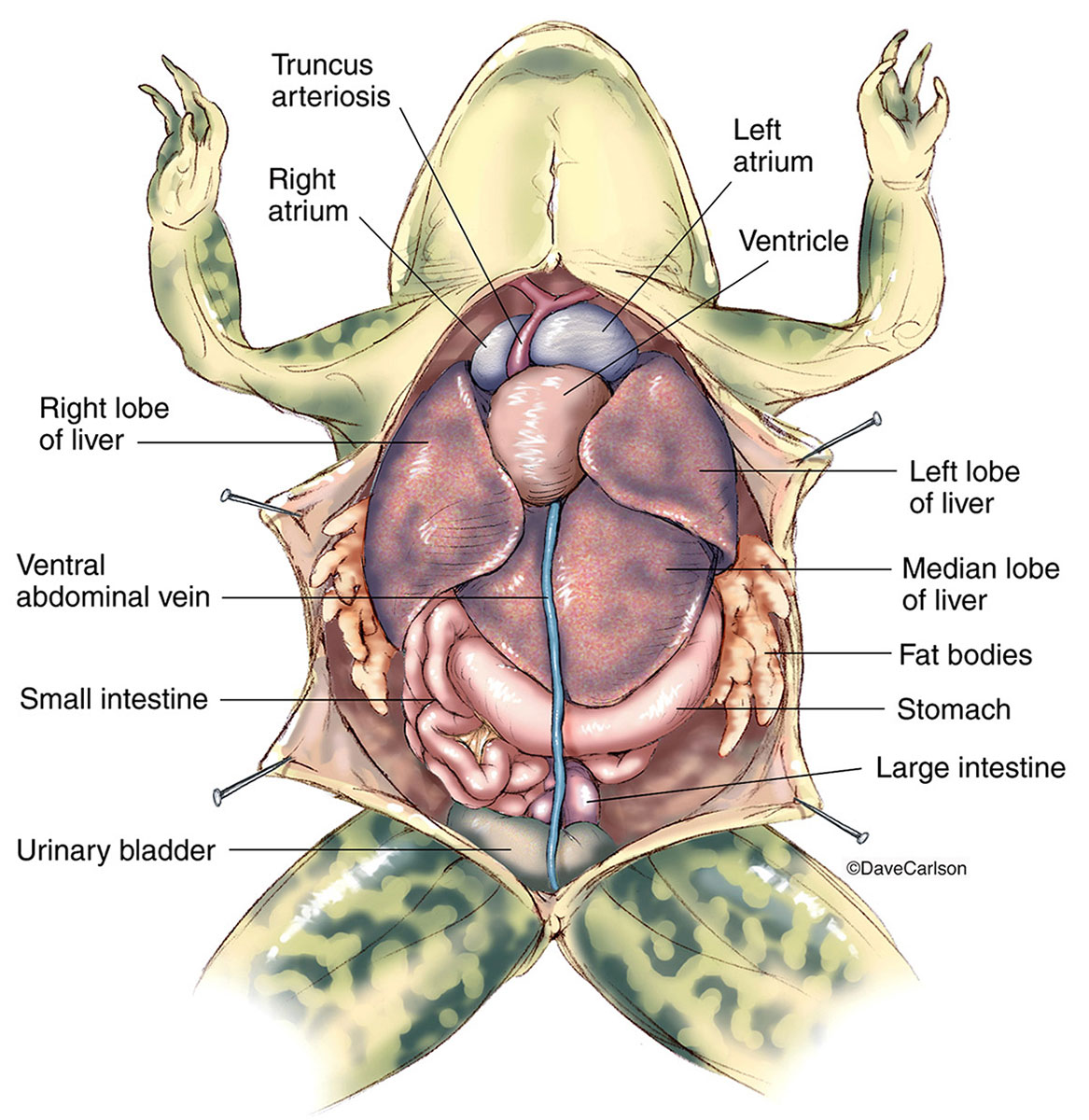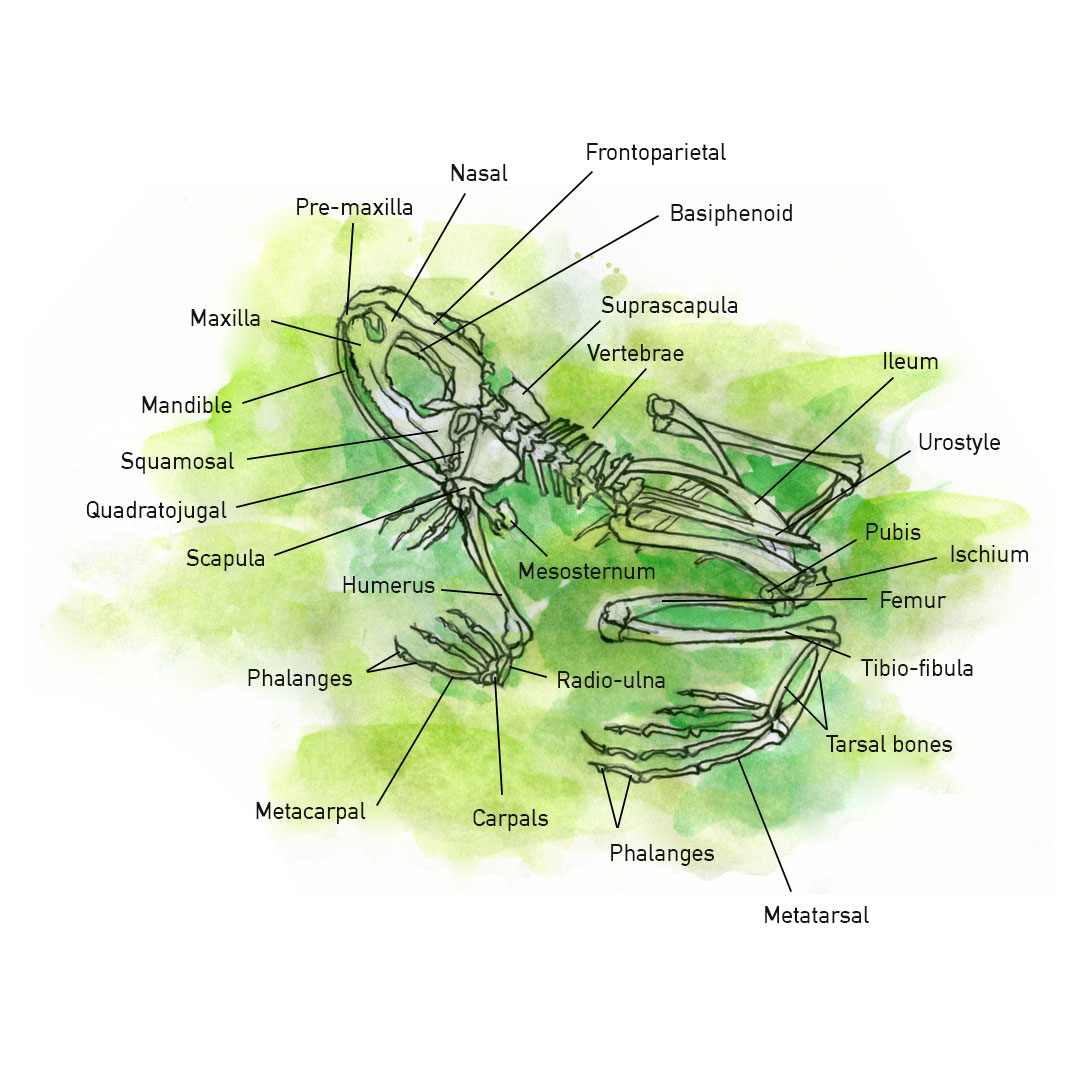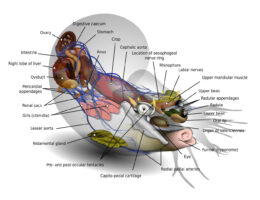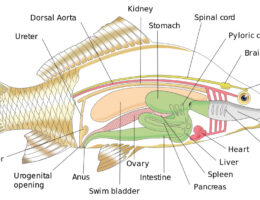- Mouth: The frog’s mouth is used for eating and catching prey. It contains a sticky tongue that can be rapidly extended to capture insects.
- Nostrils: The frog’s nostrils are located on the top of its snout and are used for breathing.
- Eyes: A frog’s eyes are positioned on the top of its head and provide excellent vision both in and out of the water.
- Tympanum: The frog’s tympanum is a circular ear structure located behind the eye that detects sound.
- Forelimbs: The frog’s forelimbs are used for movement on land and in water, and they contain five digits with webbed feet.
- Hind limbs: The frog’s hind limbs are used for jumping and swimming, and they contain long, powerful muscles.
- Cloaca: The frog’s cloaca is a single opening located near the base of its tail that is used for waste elimination and reproduction.
- Liver: The frog’s liver is responsible for producing bile, which helps to digest food.
- Heart: The frog’s heart is a muscular organ that pumps blood throughout its body.
- Lungs: The frog’s lungs are used for breathing and are connected to the mouth through a series of air sacs.
- Stomach: The frog’s stomach is a muscular sac that helps to digest food.
- Intestines: The frog’s intestines are responsible for absorbing nutrients from the digested food.
- Ovaries/Testes: The frog’s ovaries or testes are the reproductive organs that produce eggs or sperm.
- Spinal Cord: The frog’s spinal cord is a long, thin tube of nervous tissue that runs from the brain to the tail and is responsible for sending messages throughout the body.
- Brain: The frog’s brain is located inside its skull and is responsible for processing sensory information and controlling the frog’s body movements.
- Eustachian Tubes: The frog’s eustachian tubes connect the middle ear to the back of the throat and help equalize pressure.
- Esophagus: The frog’s esophagus is a muscular tube that connects the mouth to the stomach and helps move food from the mouth to the stomach.
Overall, the anatomy of a frog is well adapted for living both on land and in water, with its powerful limbs, strong muscles, and specialized respiratory and sensory systems.




